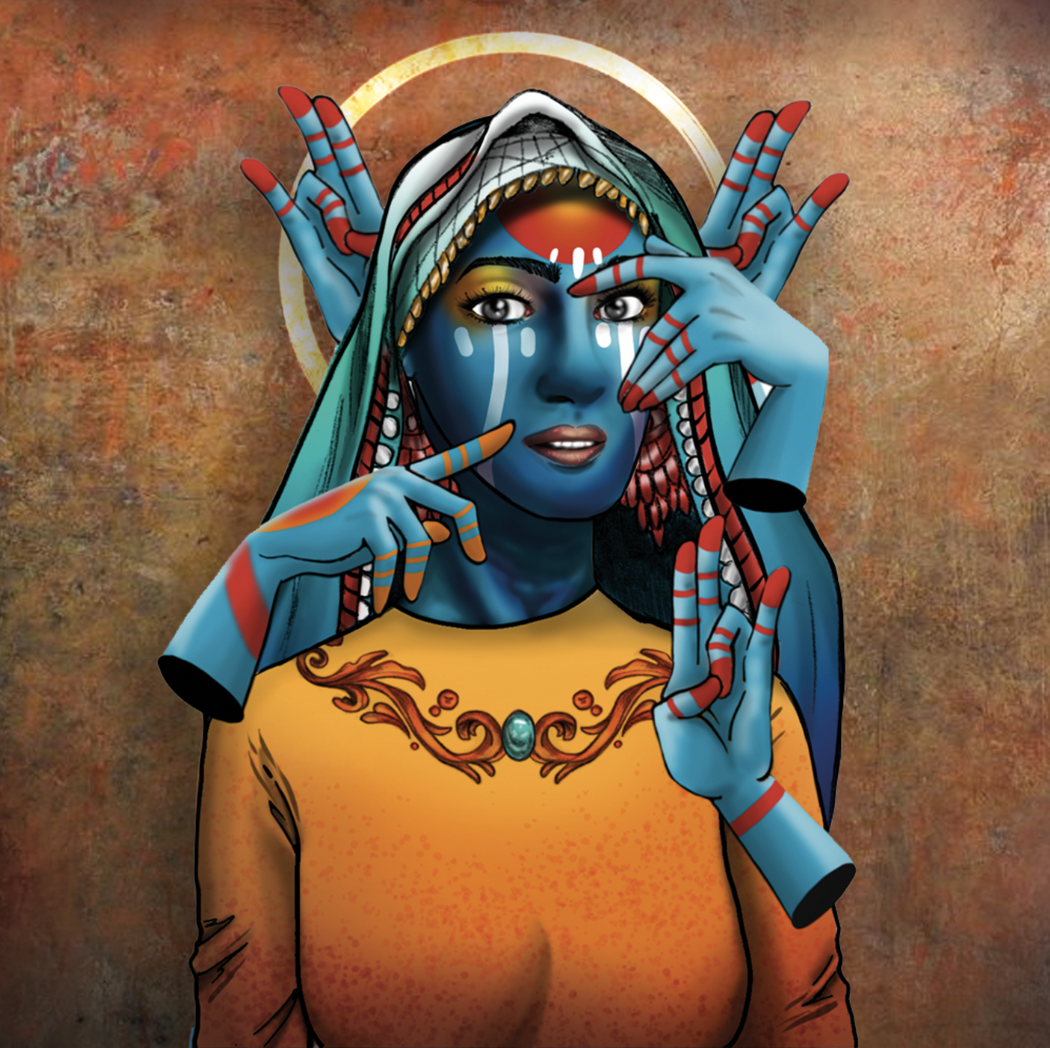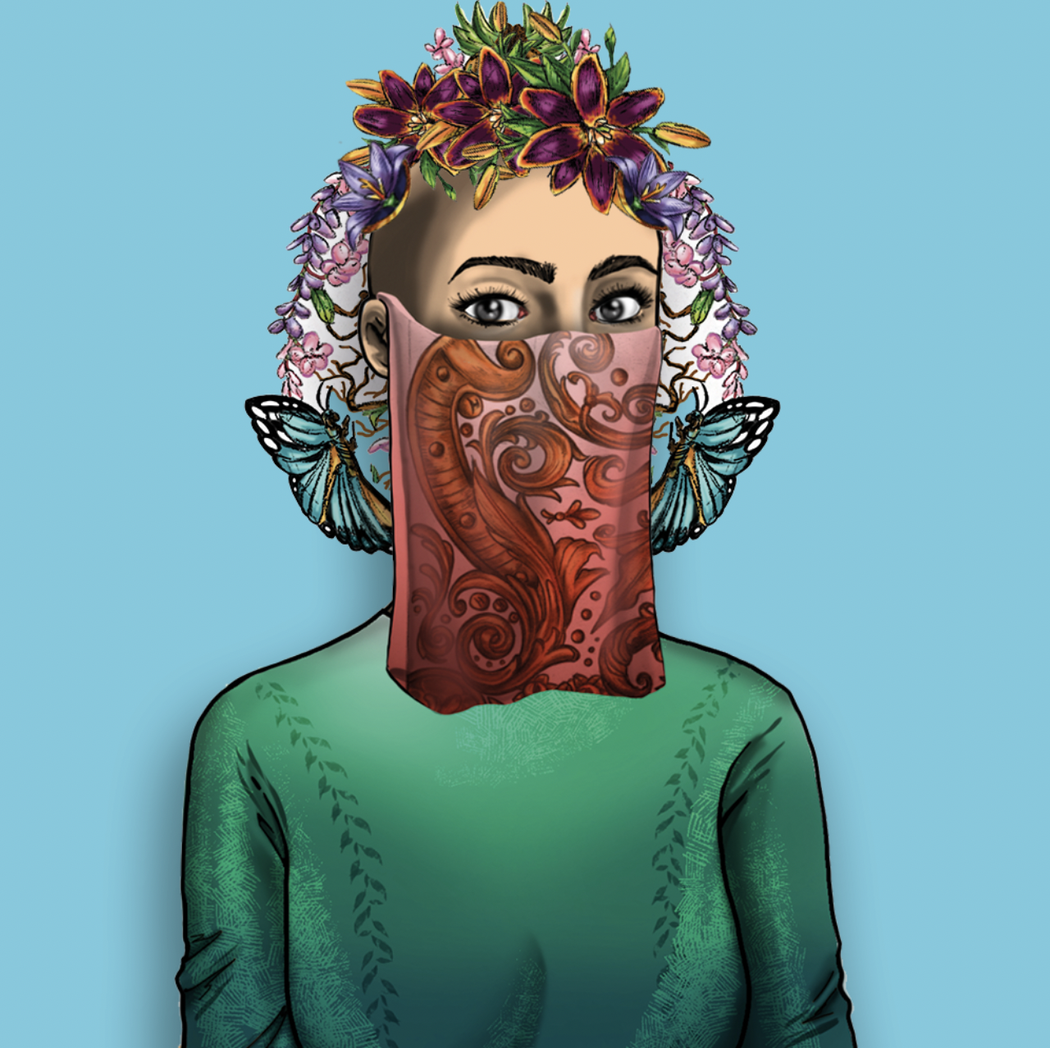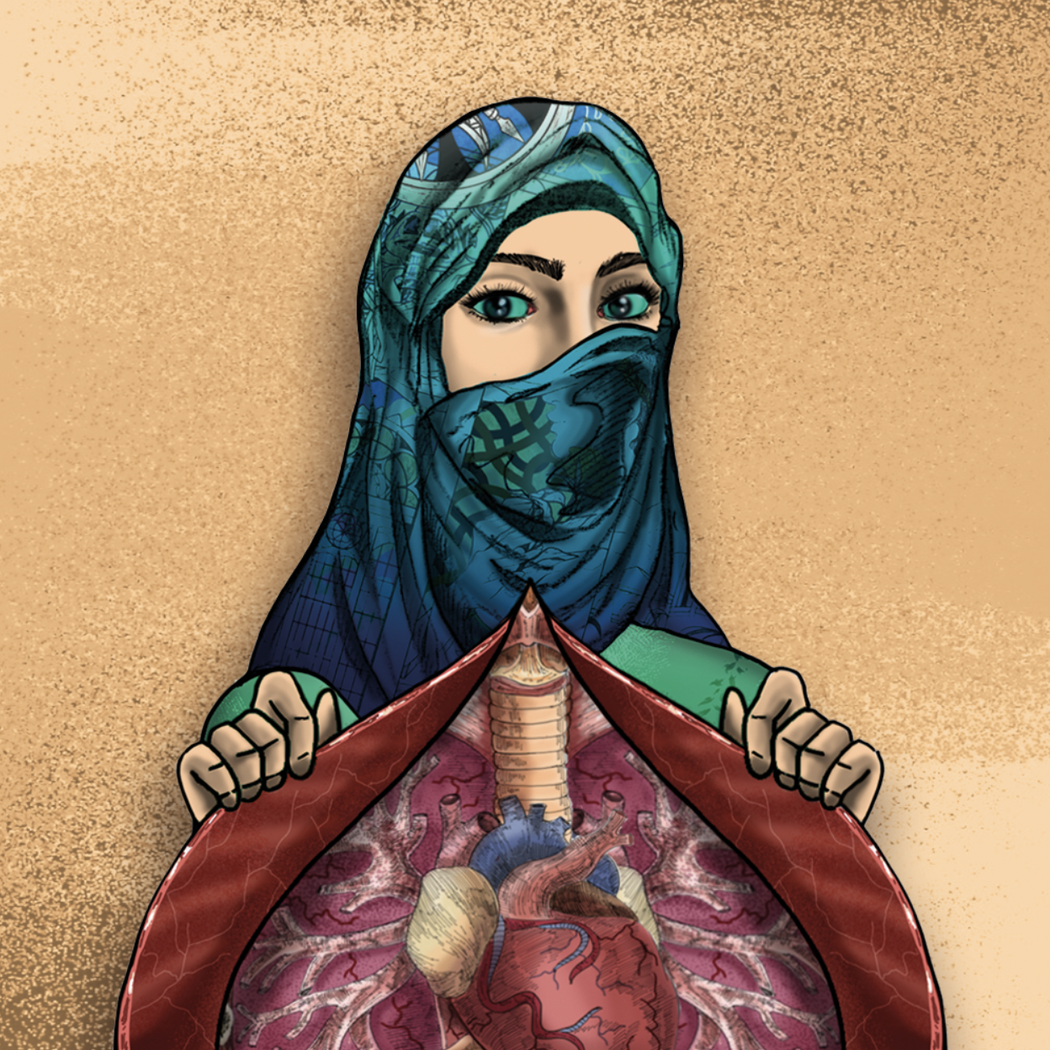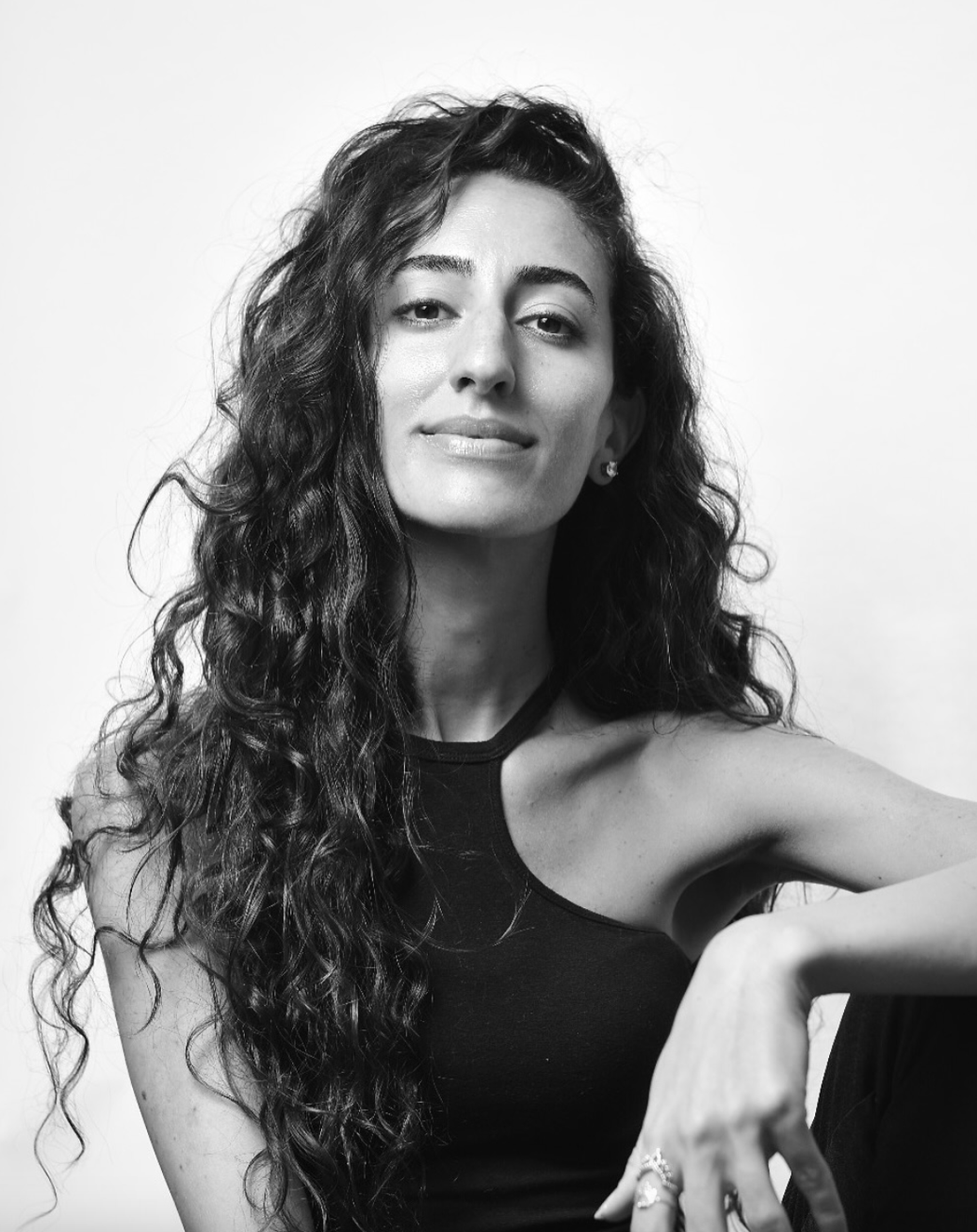Amal Karim
Your project Women of Empires beautifully combines cultural diversity and strong symbolism. What inspired you to create this series?
Women of Empires was born from a desire to explore identity as something fluid, layered, and ever-evolving. By using my own face as the foundation of each portrait, I wanted to reflect how one self can contain multitudes — cultures, stories, beliefs, and ancestral echoes that transcend time. Traveling, learning different languages, and witnessing diverse traditions deeply influenced me. This series became a way to honor that richness and to question how identity is shaped by the empires — visible and invisible — that have built us.
Each character in your work has a distinct personality, yet they share a common structure. How did you approach balancing individuality with unity across the series?
The shared facial structure is intentional — it’s a visual metaphor for the shared humanity that underlies all differences. From that common ground, I build individuality through symbolic layers: colors, textures, ornaments, rituals. It’s a dialogue between sameness and uniqueness, between the universal and the particular. In a way, every portrait is a facet of the same self, but shaped by a different cultural and emotional landscape.
 Amal Karim | Shiva
Amal Karim | Shiva
You mentioned that your art reflects a mixture of textures, histories, and cultures. How do you decide which visual elements to merge together?
The process is both intuitive and research-driven. I begin by studying historical references, spiritual practices, or natural motifs from a specific culture. Then I allow them to blend organically with my own personal symbols and contemporary aesthetics. It’s not about recreating a culture faithfully, but about weaving together traces of memory, resonance, and meaning — creating new narratives from fragments of many.
What role does color play in your creative process, and how do you use it to emphasize emotions or cultural nuances?
Color is the heartbeat of my work. It speaks before form does. I use it as an emotional compass — to express power, vulnerability, divinity, or resistance. At the same time, color carries cultural memory: certain palettes are tied to rituals, empires, and spiritual practices. Through color, I try to create atmospheres that evoke both the emotional tone of the character and the cultural echoes they embody.
 Amal Karim | Spring
Amal Karim | Spring
Some of your illustrations reveal anatomy or spiritual references. What meaning do you intend to convey through these layered details?
The anatomical or spiritual elements are metaphors for what lies beneath the surface. They speak of inner worlds — emotions, memories, ancestral forces — that shape our external identities. By revealing them, I suggest that identity is not just what is visible, but also what pulses beneath: the roots, the wounds, the sacred. It’s an invitation to look beyond appearances and contemplate the invisible layers that make us who we are.
How do you think contemporary digital illustration can contribute to conversations about identity and cultural heritage?
Digital illustration allows us to bridge past and present in powerful ways. It’s a medium where ancestral stories can be reimagined and reinterpreted with contemporary language. I believe it can challenge stereotypes, reclaim narratives, and celebrate cultural hybridity. Through digital art, we can create spaces where heritage is not static but alive — evolving and expanding with each new perspective.
 Amal Karim | Anatomy
Amal Karim | Anatomy
Working as both a corporate designer and a freelance illustrator, how do you navigate between commercial demands and personal creative freedom?
It’s a constant balancing act. My work as a designer sharpens my discipline and teaches me how to communicate clearly, while illustration gives me the space to explore deeper questions and personal visions. One side grounds me, the other liberates me. I think they feed each other — my commercial work benefits from the soulfulness of my art, and my art gains structure from the clarity of design thinking.


Leave a Reply